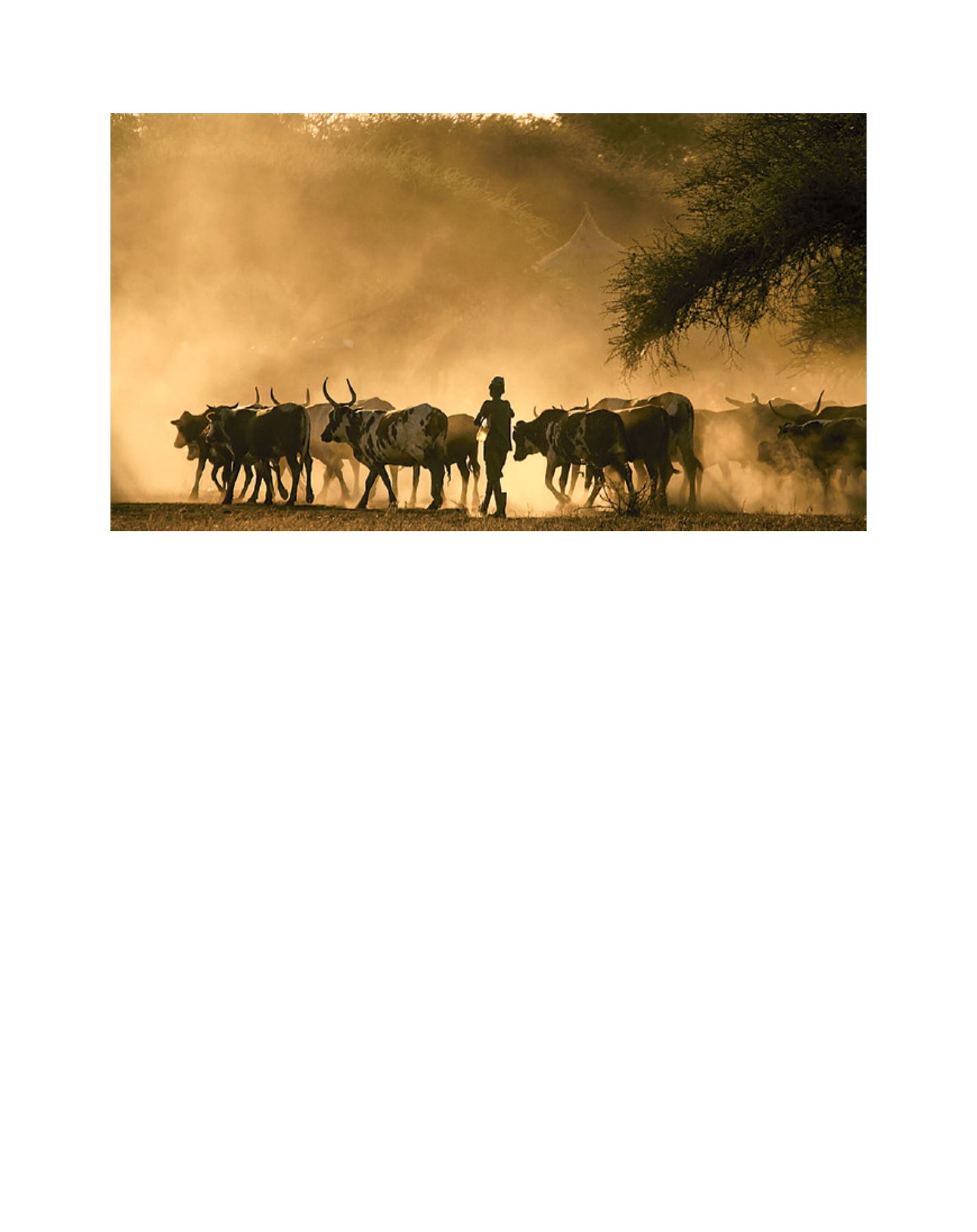

[
] 122
Livestock and women
Almost two-thirds of the world’s 1 billion poor livestock
keepers are rural women, although their ability to control
livestock assets and incomes differs by their cultural and
economic settings. In many cases, women’s ownership
of stock does not correlate with their control over use of
products or decision-making regarding livestock manage-
ment or sales. Women often control small stock such as
poultry, as long as this remains a small-scale enterprise.
Women often may own the milk from cattle while men
control the income from animal sales. Among some socie-
ties in Senegal, dairies are often run by women and milk
production is controlled entirely by women, who have sole
control also over the sale of any surplus milk.
11
Women
also manage activities at different stages along livestock
value chains, not just as producers or traders but also as
cottage processors of traditional value-added products such
as cheese, sweets and dried and ready-to-eat cooked prod-
ucts. In traditional dairy production practices in Ethiopia,
women who process and sell butter and cheese earn 69 per
cent of the household dairy income.
12
Local economies
Beyond the farm gates, livestock keeping benefits the local
and wider economies in many ways. What is often under-
appreciated is the level of local employment by livestock
family farms, even those with only a small enterprise. Many
small farms hire part-time and even permanent full-time
labourers to assist with tasks like livestock feeding and
cleaning. A study in Kenya found that half of the coun-
try’s many small family dairy farms (most with fewer than
three head of cattle) hire at least one full-time labourer.
13
These workers are often from the most resource-poor and
marginalized communities, so these are important oppor-
tunities for employment and livelihoods for the most
disadvantaged. In rural communities, some individuals
also provide informal or formal animal health or breeding
services, gather feeds for sale to livestock keepers or estab-
lish ‘agro-vet’ shops to sell animal feed and health products.
Numerous other economic and employment activi-
ties, for women as well as men, occur along the livestock
product supply chain, from the most basic collection by
small traders of livestock or products for assembly and
further sale along the chain (which in pastoral areas can
comprise very long distances and sequences of intermedi-
aries) to quite sophisticated local processing of speciality
products such as high-value dairy sweets.
In most developing countries, these livestock supply chains
tend to be ‘informal’ or ‘traditional’, meaning they don’t
employ modern processing or handling methods but deal
with either raw, unchilled or traditionally processed products.
Although these informal markets generally don’t meet official
standards, they still comprise the largest share of the livestock
subsector in most developing countries.
Importantly for the local economy, the retail prices
of such informal products are nearly always lower for
consumers than alternative ‘supermarket’ products,
generating economic gains to consumers. And informal
markets tend to employ more people per unit of product
than modern, capital-intensive product supply systems.
Studies across Africa and South Asia found that informal
milk markets employ two to five times as many people per
Image: ILRI
Livestock are the only practical means of harvesting the benefits of scarce moisture in drylands and other regions where
the climatic conditions are unsuitable for crops
D
eep
R
oots
















